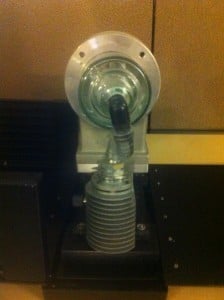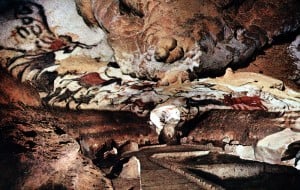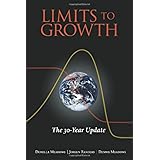Book Review “Secrets of E-Cat“
by Brad Arnold
Brad Arnold read Mario Menichella‘s Secrets of E-Cat almost immediately after the English version was released so we asked him for his impressions. Following his review is a Q&A with author Mario Menichella.–CFN
“The aim of this essay, therefore, is not to determine whether the E-Cat is an amazing product or the scam of the century – this verification and the scientific validation is only a secondary theme of the book, although it is treated in some depth – but to bring an understanding of how it works to all those who, like me, would like to try to replicate it.” –Mario Menichella Secrets of E-Cat [pg 6].
The 144 page e-book “Secrets of E-Cat” is a good read. It doesn’t dwell on the politics or gossip surrounding Rossi – in fact the author is friends with both Rossi and Focardi – but instead it analyzes the mechanics of the E-Cat, or Energy Catalyzer. Since Mr. Menichella is an inquisitive physicist, he was able to lend more light than heat to the subject.
What is the E-Cat, how much energy does it produce, how is an E-Cat made, what is the secret catalyst, and what are possible theories for why LENR Ni-H (Low-energy nuclear reactions Nickel-Hydrogen systems) work. These are the questions the book explores. Safe to say that Rossi’s secret Italian sauce is still secret, but never the less several interesting possibilities are raised. It really isn’t fair to the author that I steal his thunder by going into specifics, but it is curious that iron is found in some of the products of Rossi E-Cat reactions.
There is an analysis of Rossi’s treatment of the nickel before it goes into the reaction chamber – what size particles and if he selects for isotope. Rossi said he tried about 10,000 experiments – there are a lot of combinations. What the book made clear was that Rossi was the first to be able to get a large amount of energy from nuclear fusion reactions at relatively low temperatures.
If you want to build a LENR Ni-H device, the book could very well help you do that, even fingering a nickel powder distributor, but don’t expect 6 (to 200) over unity. It feels good to know the basic working principles behind the E-Cat, but I wish the author had been more specific about the energy density of nickel (this is an important subject, because the more energy dense nickel is, the more spectacular LENR technology is).
At one point, the book mentioned that Rossi’s 5kW E-Cat used one gram in 5 days of continuous use. Then later, it was theorized that a 10kW E-Cat would use the same. That would mean that (as the book says) nickel was 100,000 times as energy dense as diesel fuel. I’d like to contrast that with the claim Rossi made on his patent application, which was that a gram of nickel was equivalent to 517 tons kilograms of oil. That would mean nickel was over 5 hundred million thousand times as energy dense (according to my calculations).
Editor’s note: Yes, Mr. Arnold’s calculations were correct. However, there is an error in the patent application that has been addressed; the available energy is equivalent to 517 tons kilograms of oil per gram of nickel. [NYTeknik]
Thus, the calculations in the book are correct. “1 gram of oil can gives a chemical energy in the order of electron Volts, while 1 gram of nickel can give – in a typical nuclear reaction – an energy in the order of MeV, which is about 10^6 larger.”-Mario Menichella
By the way, all you need to do to figure out energy density is to calculate how many grams of (for instance) oil would be the same as a gram of nickel. Just go to this site and plug in 517 kilograms, and you get the answer 517,000, which means that 517,000 grams of oil equals a single gram of nickel in terms of producing the same amount of heat energy (the nickel in a LENR reaction, and the oil by burning it).
Also according to the book, Rossi was sometimes getting 200 times the return energy. In public demonstrations, Rossi’s E-Cat was only getting a little over 6 from unity. The issue is safety. Right now the E-Cat is limited to lower temperatures and more electrical usage because the reaction (which, by the way, takes a few minutes to initiate) must be controlled, or it could spike and explode (any pressured container, even a small one, is a danger).
I suppose a lot of this will become clear as the mass media picks up on the story. We are all looking forward to Rossi’s 1 megawatt E-Cat being introduced to the public the last week of October. Until then, Mr. Menichella’s book “Secrets of E-Cat” is a good substitute and primer. — Brad Arnold

author Mario Menichella
CFN Mario, you are the first to write a book on the E-Cat. What are your impressions of the technology?
MM Your question would require a long answer. I think that the E-Cat produces excess energy, but in this moment we do not know, through an official test or certification, how much it is. However, the machine is able to function in a self-sustained mode, as declared in an interview by the Italian physicist Giuseppe Levi: he saw the machine operating for a long time without electric energy provided in input during a private test lasted 18 hours, at the beginning of 2011.
A few weeks ago, on September 8, I met Andrea Rossi in a meeting I organized in Bologna and he told me that his 1-MW prototype is guaranteed to have a 1:5 input/output power ratio: i.e. if, I have 5 thermal kWh in output for every electric kWh provided in input.
CFN This is very exciting news…
MM Yes, I do not want to bore your readers with calculations, but I am a physicist working also as energy consultant, so I have made an accurate estimate, for a customer, of the cost of 1 thermal kWh produced with a 10-kW E-Cat sold at a reasonable price of about 20,000 euro, corresponding to 2,000 euro/thermal kWh, as Rossi has always hypothesized.
The result I found is surprising, because such cost is less than the half that in the case of the alternative technologies in the heating field: heat pumps, solar panels, Diesel boilers, natural gas boilers, wood chip boilers, electric stoves. So, the E-Cat, with the current 1:5 input/output power ratio, has already the potential to revolutionize the heat market, especially in the temperature range 175-500 °F (80-250 °C). It can also be used, with savings, for medium or large cogeneration applications. The above power ratio, instead, is not enough for a pure electricity production.
CFN What prompted you to write this book on the E-Cat?
MM The obvious answer is because I am a writer on science and this is my job. However, I wrote my last book in 2006, and I did not plan to write a new book in my life. But a series of coincidences led me to change my decision. When, on February 2011, I read about the first public presentation of the E-Cat made on January 14 in Bologna (Italy), I immediately understood the potential of such a machine. So, I write to Rossi to compliment with him. But I was really involved in this adventure only when I was contacted by Claudio Puosi and his wife, Vessy Nikolova, to organize a popular conference on cold fusion and E-Cat in Viareggio, an event which held on July 23, 2011, with the contribute of Sergio Focardi (through a long recorded interview) and Andrea Rossi (interviewed in real-time by phone). Then I decided not to disperse the information I had on this argument, and I wrote an instant book, with a somewhat investigative approach.
CFN Who is the audience you wrote for?
MM I wrote for many years long articles on single scientific hobbies in Italian magazines and in dedicated web sites, describing interesting fields like: amateur seismology, model rocketry, search for meteorites with a metal detector, and so on. My model was the old famous book “The amateur scientist” by C. L. Stong. The E-Cat is one of the most intriguing topic for an amateur scientist, because it is an object with a huge potential and a fascinating mystery regarding its core, the “secret catalyst”. But my public is not composed only of amateurs. Due to the economic importance of such invention, I think that small, medium and big companies could be interested in trying to reproduce a similar device, not to say about many open-minded researchers in Universities and other scientific institutions, who are now changing their opinion on cold fusion (and LENR).
CFN Is it really possible for a competent amateur to replicate the E-Cat technology?
MM Theoretically, yes, because you can split the problem in two parts. The first is to replicate the old apparatus developed by Focardi-Pianteli in Siena, with its input/output power ratio of 1:2. It is well described in many scientific articles, so it is not an impossible task. The second part of the problem is to discover the “secret catalyst” used by Rossi, and this is more difficult: you need to be very lucky!
However, it is a fascinating enterprise, and you can also try, in your experiments on the Ni-H cell, non-standard routes to achieve an energy gain: world literature on low-energy nuclear reactions is full of different kinds of techniques for loading the gas in the metal and for providing some forms of excitation to the system, and they are the two typical key-factors to trigger a cold fusion nuclear reaction.
CFN Can you confirm that NASA is interested in Francesco Piantelli’s nickel-hydrogen system?
MM Yes, I can confirm, but not from news coming from Piantelli or collaborators: our sources of information are in USA. However, you are touching a very “hot” topic. Behind cold fusion there are big interests both in the civil and military field, but I am not authorized to reveal the entire information I have. Today, public information is only a little part of the “reality” on cold fusion: everything else is covered by some kind of secrecy. For example, some of the hypothesis on the secret catalyst used by Rossi – that you can find in my book – are supported by confidential information that I could not reveal explicitly. I can only say that, probably, Piantelli will be – directly or indirectly – involved in experiments/research funded by the USA through NASA.
CFN How does Mr. Piantelli’s work differ from Mr. Rossi’s?
MM Piantelli described quite precisely the experimental apparatus in his patents, and anyone was able (or tried) to replicate it. The main differences from Rossi’s work are two. The first is that he does not use a catalyst, like in the old Focardi-Piantelli experiments. The second difference is that we know for sure he uses nanostructured nickel, created through a very expensive dedicated machine. He works mainly on the nickel geometry, even if in his experiments other 5-6 factors are important to trigger the nuclear reaction.
CFN What is it that makes Italian researchers so successful at LENR?
MM The mean level of Italian research in physics is very high: Italy is the main contributor, in terms of people involved at every level, in the experiments of nuclear physics performed at CERN (Geneve). Another factor is creativity, which is quite typical of the Italian researchers. Also luck, obviously, has a big role. We do not know how Rossi discovered his secret catalyst, so we are missing an important piece of information about his “route to success”. However, success requires also patience and many unsuccessfully attempts.
CFN Thanks for the good news, Mr. Menichella!
******************************************************************************
Related Links
Know the Secrets of E-Cat press release by Ruby Carat CFN September 23, 2011
Secrets of E-Cat by Mario Menichella from Consulente Energia
Viareggio Cold Fusion conference: science, politics, and an Italian competitor by Matt Ivy CFN July 23, 2011
CERN European Organization for Nuclear Research Geneve, Switzerland
English homepage
Convert Units from tons to grams at www.convertunits.com













